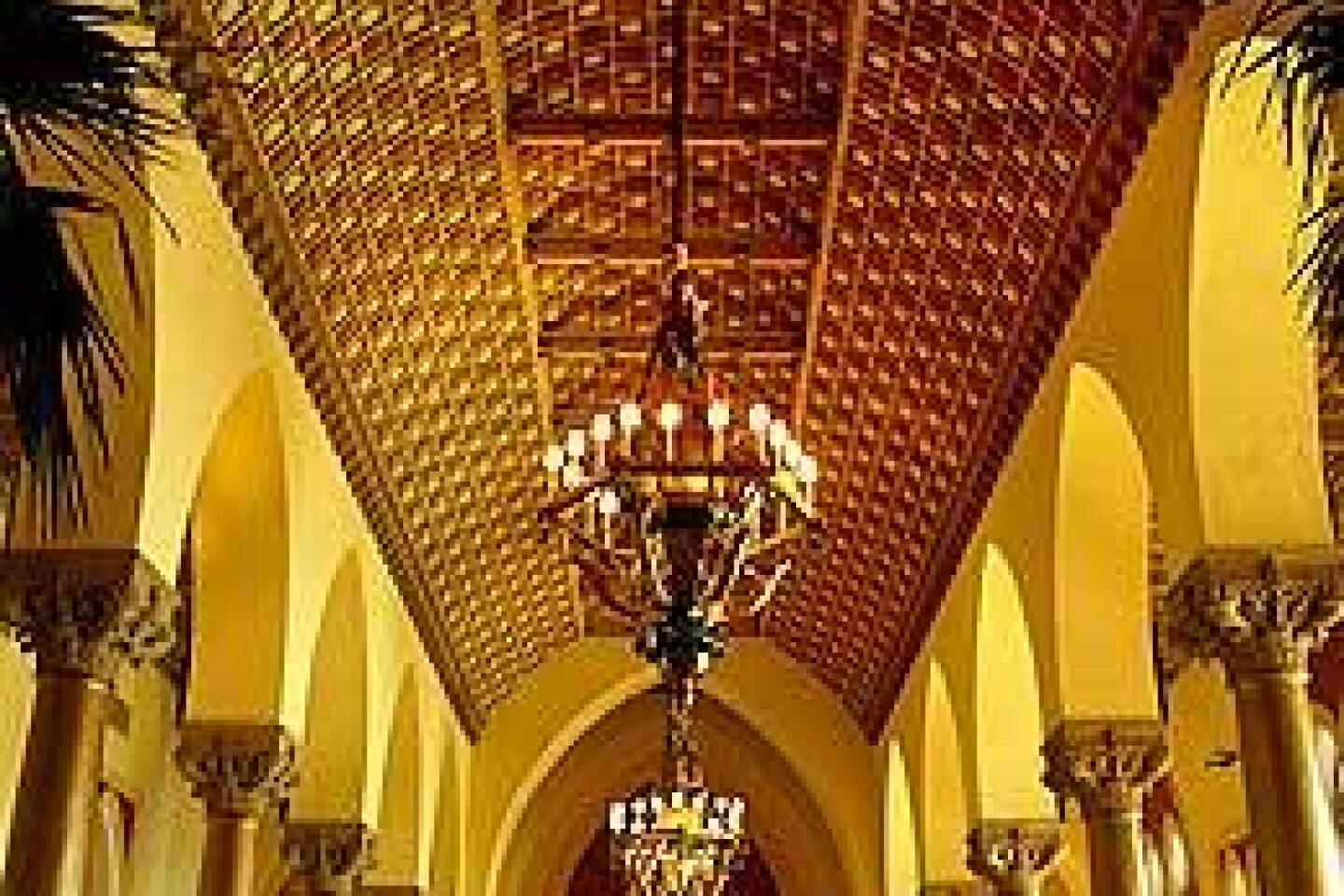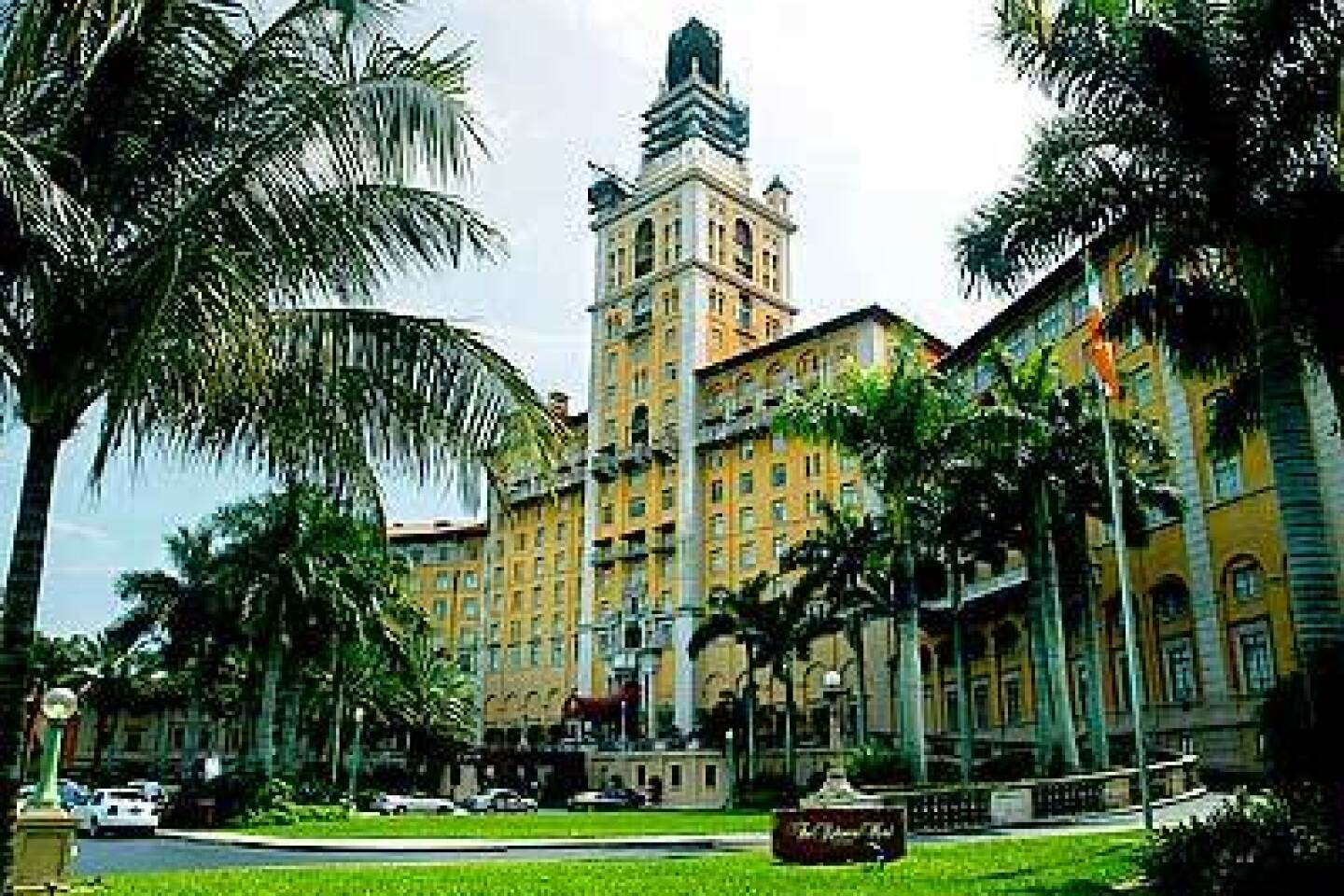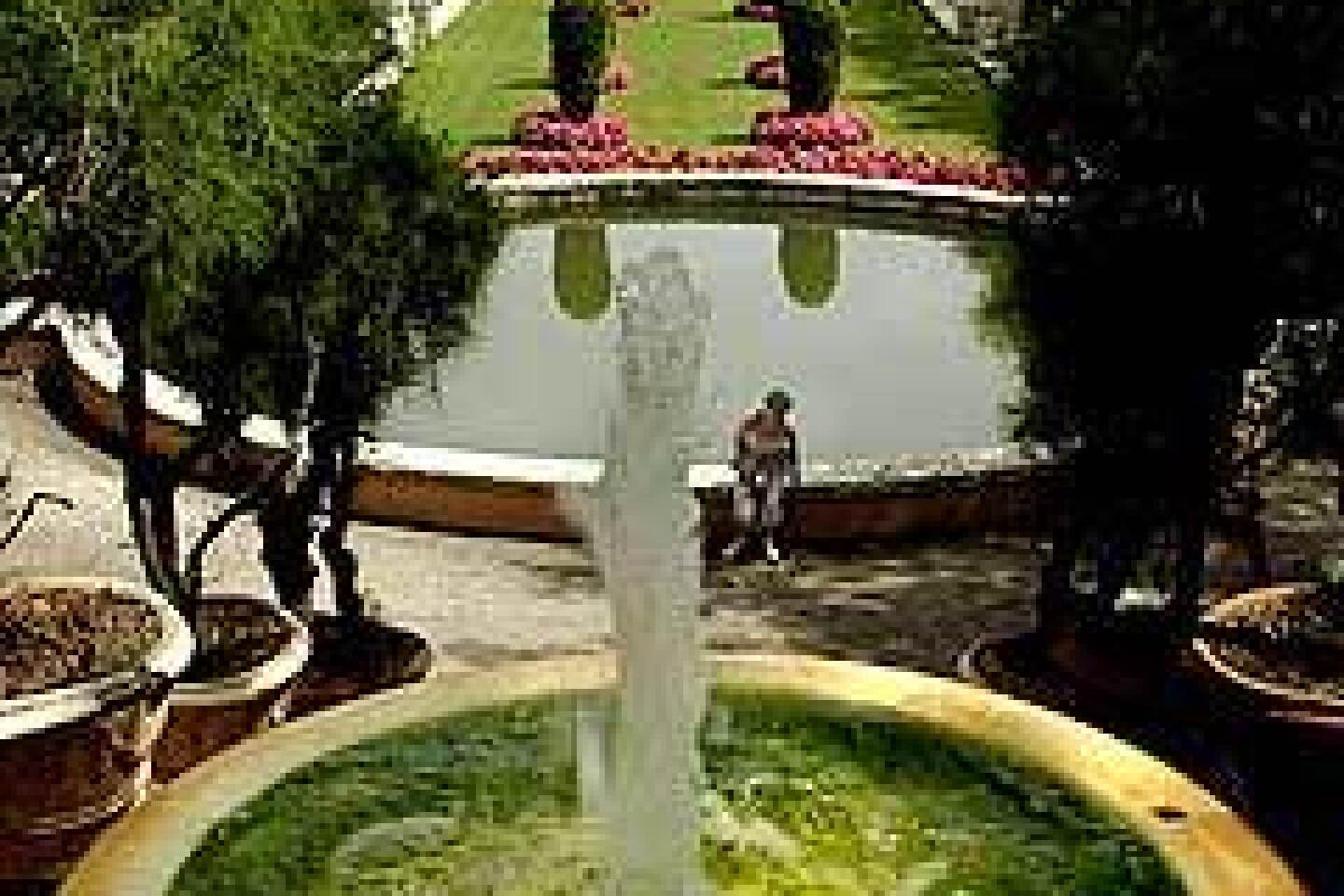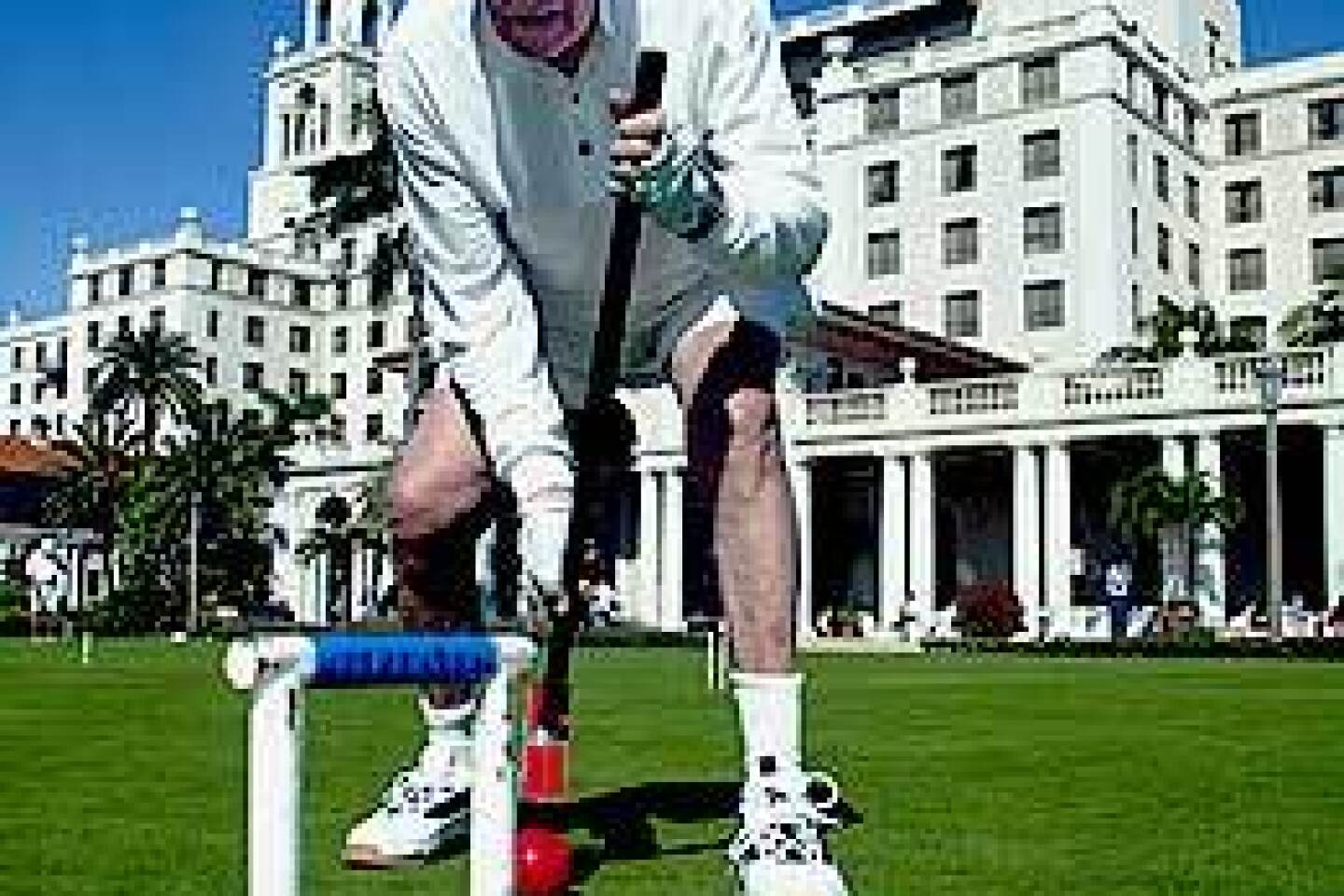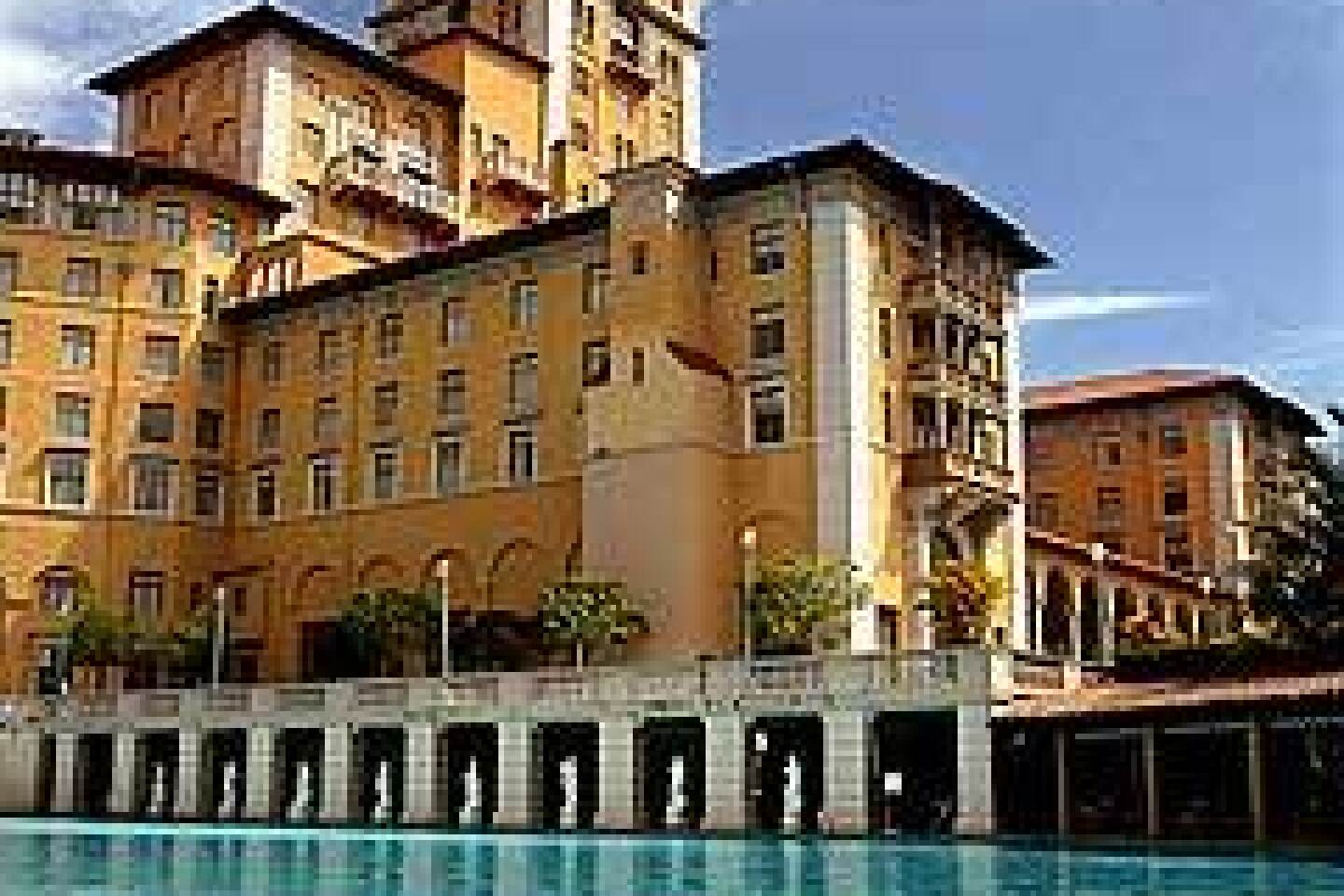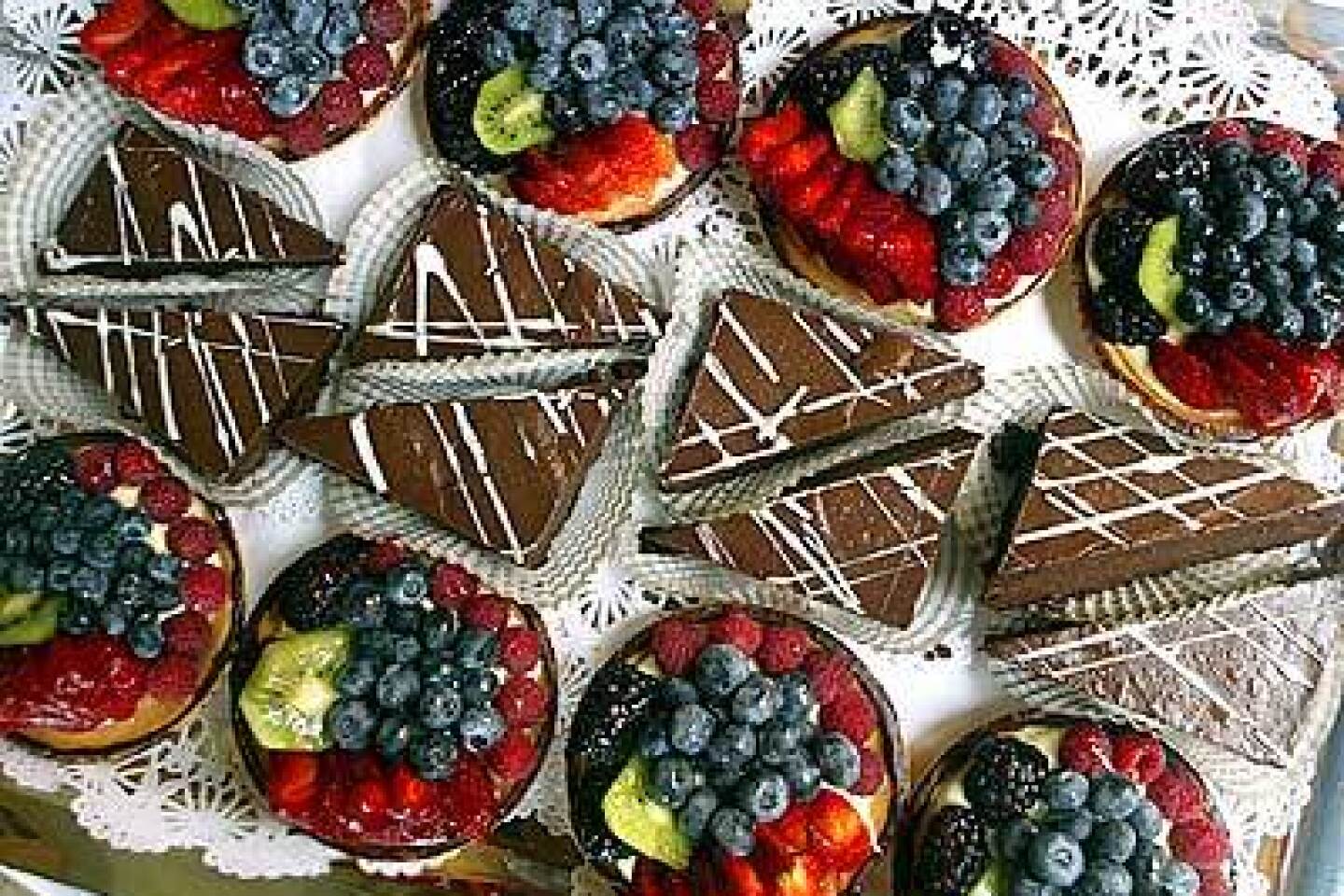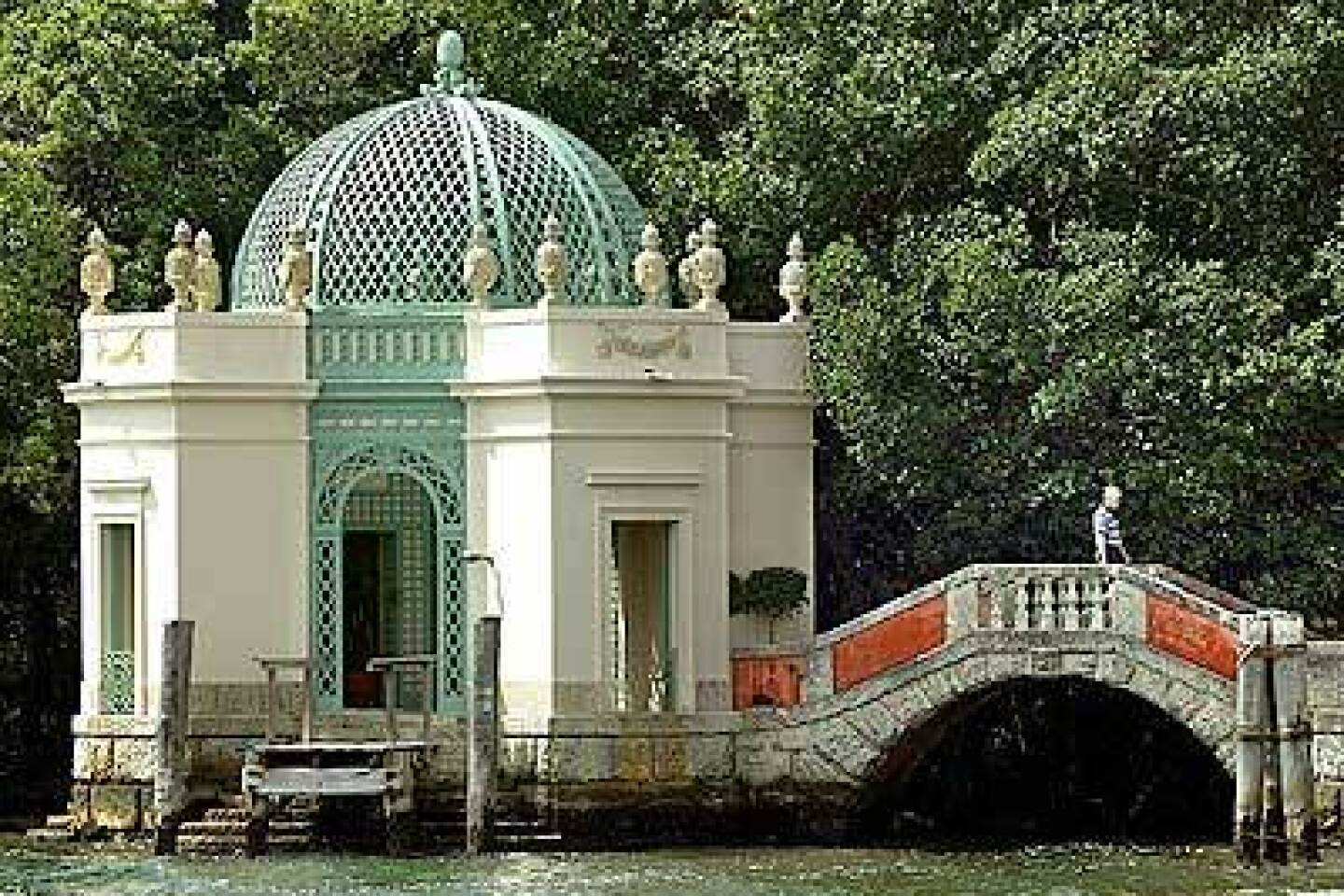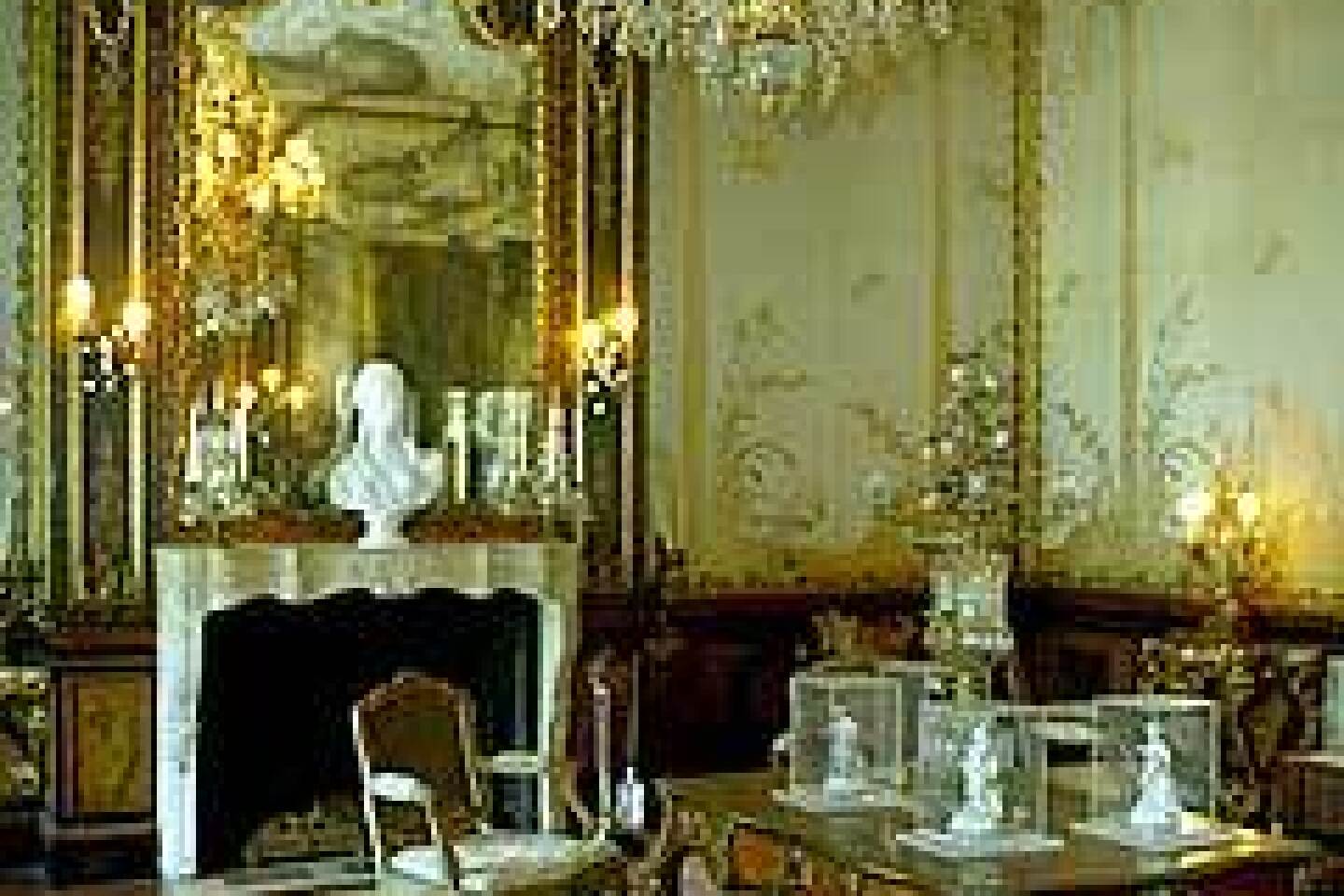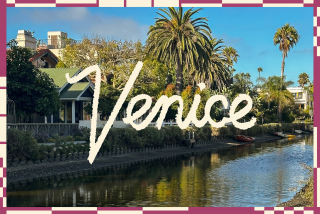South Florida’s Gilded Age hotels and mansions
- Share via
It was the Gilded Age, a post-Civil War, pre-Great Depression era when the rich got richer and those who had it flaunted it, building grand and grandiose mansions and hotels as Rococo-Beaux Arts-Renaissance expressions of what they deemed the apogee of culture.
In California, it was William Randolph Hearst and his San Simeon. In South Florida, visionaries and eccentrics built spectacular hotels for the wealthy and hotel-size winter homes for themselves.
Great examples of Gilded Age architecture survive, geographically close and yet a world apart from the oh-so-trendy Art Deco district of Miami’s South Beach.
In January, I flew to Fort Lauderdale, Fla., rented a car and drove about 50 miles north to Palm Beach, where I stayed overnight at the Breakers. From there, I hotel-hopped down the Atlantic Gold Coast, staying at Boca Raton Resort & Club, about 30 miles south, before continuing 50 miles south to the Biltmore at Coral Gables. En route, I visited the winter homes — both now museums — of Florida pioneer Henry Morrison Flagler, who struck gold as a founder of Standard Oil, and International Harvester co-founder James Deering.
I loved every painted ceiling, Oriental carpet, splashing fountain, marble column, palm-lined entrance and Baccarat chandelier. For those in the money, ostentation knew no bounds.
But when the party was over — dealt the double blow of a 1926 hurricane and the 1929 stock market crash — some of these palaces fell on hard times. Buyers and heirs did not always treat them reverentially, and several came perilously close to being razed. In the ‘40s, all three hotels were converted to military hospitals or barracks.
But they’re back and beautiful. All that grandeur does come at a price — stiff tabs for pretty standard rooms.
None is grander than the Breakers, the current incarnation of the 1896 Flagler-built Palm Beach Inn. It changed its name after guests began requesting rooms “over by the breakers.” That hotel burned down twice, the second fire, according to the hotel’s historian, traced to a newfangled curling iron in 1925. Today’s oceanfront Italian Renaissance building dates back to 1926.With completion of a $145-million renovation in 2002, the 560-room hotel has remained faithful to its past. The glorious public rooms have been refurbished, the guest rooms renovated for the first time since the ‘70s.The owners (Flagler family descendants) have added a luxe oceanfront spa and fitness center, high-end shops and a kids’ high-tech play center. One of the four pools is for children. With it all, the Breakers has to-the-manner-born elegance.
My room (Internet rate of $436, including tax) overlooked a rooftop but was a decent if not extravagant size, nicely done in soft green and coral, with roomy bath, king-size bed and all the perks — umbrella, terry robes, turndown service.
Room service is pricey ($7 for Cheerios), but the gourmet-food and news shop has a fine little deli where I bought a bagel and coffee ($4.50) and ate breakfast as I sat on a wicker chair on the veranda overlooking lawns and palm-bordered driveway. Restaurant service was sometimes slow and less than perfect, despite a 20% service add-on. Still, where but in the Tapestry Bar can one relax in living-room comfort while hearing live jazz and gazing at 15th century Flemish tapestries?
Early on, when the Breakers was strictly a winter resort, families brought their nannies. Today, the hotel’s Coconut Crew day camp is the baby-sitter, but the hotel still caters to a carriage trade. Guests in the $750-to-$995-a-night rooms on the sixth and seventh floors sleep on Frette linens and enjoy the perks of the Flagler Club, including complimentary breakfast and drinks.
Prohibition-era patrons had to be a bit more creative to get drinks. The hotel’s publicist, Margee Adelsperger, pointed out a secret staircase that once led to a balcony overlooking the majestic Circle dining room. “Palm Beachers would sneak up and sit behind the band with their bottles,” she said.
Flagler Museum
My next stop was the Henry Morrison Flagler Museum (formerly Whitehall), a $4-million wedding gift from Flagler to his third wife, Mary Lily. (Widowed once, he married her after divorcing Ida Alice, who was declared insane for, among other things, insisting that her Ouija board had told her the czar of Russia wanted to marry her.) The newlywed Flaglers hosted many a society soiree in their 55-room, 60,000-square-foot Beaux Arts mansion on Lake Worth. In the mirrored gold and white ballroom, I could almost hear the strains of a minuet as I was told about the 1903 Bal Poudre, a Washington’s Birthday gala where powdered wigs were de rigueur.
Flagler spent 11 winters at Whitehall, and in 1913 suffered a fall that led to his death at age 83. The much younger Mary Lily lived four more years, returning only once to Whitehall.The Neoclassical Revival building, designed by John Carrère and Thomas Hastings, architects of the New York Public Library, was sold by Mary Lily’s niece and suffered the indignity of being converted into a hotel with an ugly 12-story tower, now gone. In 1959, Flagler’s granddaughter, Jean Flagler Matthews, saved it from demolition by creating a nonprofit foundation, and Whitehall opened as a museum in 1960.
Up the broad marble steps and through the grillwork doors where uniformed doormen once greeted guests, I stepped into the marble reception hall, at 40 by 110 feet bigger than many Southern California homes.
As I peeked into the billiard room off the central courtyard, my guide mentioned that it was only here that Mrs. Flagler tolerated spittoons. (Teetotaler Flagler, in turn, let her serve wine.)
Upstairs, the master bedroom — one of 15 original bedrooms and 13 servants’ rooms — has its original Louis XIV furnishings. Some guest rooms, whose décor ranged from Colonial to Art Nouveau, have been restored.
A prime attraction, Flagler’s 1886 private railroad car, is under wraps during construction of Flagler Kenan Pavilion, a re-creation of a Beaux Arts railway terminal on the grounds that’s set to open in June. It also will house the relocated Whitehall Café, which serves a Gilded Age tea for $18.
Boca Raton Resort
Continuing south on the coast road, the A1A, I had no trouble spotting the tower of the Boca Raton Resort & Club, which is 27 stories tall and painted Boca pink.I had chosen one of the least expensive rooms ($370 plus tax) in the Cloister, the original building. It was an average-size room, done in shades of lemon and lime, and had a pleasant view of the courtyard entrance. The bath was small, although there was a second sink and dressing area at the opposite end of the room.
Boca Raton, with 1,041 rooms, is bigger and more commercial than the Breakers. It’s actually five hotels spread over 356 acres: the Cloister; the 1960s tower; the golf villas; the Yacht Club (a 2002 addition of 112 deluxe rooms with concierge club, fronting on the intracoastal waterway); and Boca Beach Club, a self-contained resort across the waterway with a private beach on the ocean. (Guests commute by vintage yacht.)
Strolling the grounds, I conjured up the image of Addison Mizner, the hotel’s creator, an eccentric and a monkey fancier who was given to strolling the grounds wearing silk pajamas with a macaw perched on one shoulder, a monkey on the other. Mizner, once a Klondike prospector, came to Florida at age 45, having been told he had only months to live. Instead, he built the hotel but owned it only six months before going broke.
Through the years, it was sold and resold. In the last two years the owner, Boca Resorts Inc., has invested $100 million in such improvements as the expansion of the Spanish-influenced Spa Palazzo, a sybarite’s dream with gardens, pool and a great room with fireplace.
Like the Breakers, Boca Raton has remade itself for the times. Men in white still play croquet on the manicured lawn, but hotel guests also can work out in one of two fitness centers. The lobby with its vaulted, painted ceiling, is as grand as ever, and many furnishings are antiques chosen by Mizner. (He also was known to create instant antiquity, having his friends tramp up and down the grand staircase wearing golf cleats to make the stone appear distressed.)
The 14 lounges and eateries — haute to casual — include the Lobby Espresso bar and patio, a popular and modestly priced alternative with light fare to go. I loved the live music in the intimate Mizner’s Monkey Bar but passed up its signature drink, the Screaming Orangutan, a blend of Absolut mandarin vodka, Midori and cranberry juice ($10.50).
Vizcaya
In Miami, my first stop was at Vizcaya, where a turn off busy South Miami Avenue leads through a glade to the 34-room Deering mansion on Biscayne Bay. Deering, a bachelor, devoted the years 1914-16 to building Vizcaya, traveling to Europe with his designer to bring home furniture, doors and fireplaces. He died after nine winters at Vizcaya, and his heirs sold all but 50 of the 180 acres.Today, Vizcaya is owned by Miami-Dade County. What remains is fabulous. The Italian Renaissance mansion, where President Reagan met with Pope John Paul II in 1987 and President Clinton attended the Summit of the Americas in 1994, has the original furnishings, a feast of decorative arts from the 15th through 19th centuries, including Biedermeier, Chinoiserie and Louis XV.
The nine guest rooms, each named, open onto a galleria overlooking a courtyard. In “Lady Hamilton” is a headboard said to have been that of Emma Hamilton, Lord Nelson’s mistress. Deering’s suite included a bath with running fresh and salt water.
I loved the bayside teahouse, inspired by a pavilion at Versailles, France, and was amused by the huge stone barge with Alexander Calder sculptures anchored in the bay. The formal gardens, a fantasy of fountains, pools and gazebos, borrow from the Italian (a walled garden) and the French (a hedge maze).
My last night was at the Biltmore in Coral Gables, 10 miles south of Miami. My room ($299 plus tax) was small but stylish, with a king-size bed, all amenities and a generous tumbled marble bath. There was a bit of a city view.
I would happily have slept in the colonnaded lobby, with its hand-painted, barrel-vaulted ceiling, travertine floors and Oriental carpets, watching the finches and nightingales in their oversized octagonal wooden cages. A pianist plays for teatime in the lobby.
At the Biltmore, a consortium led by Seaway Hotels Corp., the Biltmore’s owner since 1992, recently completed a 10-year, $40-million renovation. Improvements included marble resurfacing of the 150-by-225-foot swimming pool. Today it boasts cabanas, but in the Jazz Age there was a grandstand for crowds that came to see aquatic shows and beauty contests.
The butterscotch-colored hotel, with its landmark 15-story Spanish-style tower, is the pride of Coral Gables, whose residents saved it. Both city and hotel were the dream of George Merrick, who thought big but died broke. The Mediterranean Revival-style building was designed by Leonard Schultze and S. Fullerton Weaver, architects of L.A.’s Biltmore.
After Merrick lost everything in the Depression, the hotel changed hands several times. The government, having taken it over as a World War II military hospital, declared it surplus in 1973 and gave it to the city. Some cried albatross. Abandoned for 17 years, it was a mess. But the grass-roots Save the Biltmore campaign had it declared a National Historic Landmark while it struggled to find the right tenant. One hotelier invested millions but failed before Seaway came along.
One of the 280 rooms is a hideaway on the 13th floor tower, popularly called the “Al Capone Suite,” although, a staffer mentioned, “we don’t promote that.” (Capone isn’t known to have stayed there, but mobster Thomas “Fatty” Walsh was fatally shot there during a gambling dispute in 1929.) Suite occupants have included the Duke and Duchess of Windsor and Bill and Hillary Clinton.
One small annoyance: My bill included an automatic add-on of $7 a day for use of the fitness center and phone. When I protested that I had used neither, it was removed. (At Boca Raton, I found a $9 daily “service charge” on my bill, but that was for staff.) Until you read the fine print, you’re apt not to know about these add-ons, and hotel staff happily accept tips. With Florida’s sales and occupancy taxes of 10% to 13%, $14 to $20 for valet parking overnight, pricey in-house bars and restaurants, and spa and cabana fees, hotel bills can escalate quickly.
Where once the Biltmore, the Breakers and the Boca Raton Resort were watering holes of the privileged, today they open their elegant doors to conventioneers and have built facilities to court them. (The Boca Raton lobby swarmed with Soap and Detergent Assn. delegates during my visit.)
Pomp and pragmatism under the same red tile roofs. If that’s what it takes, that’s OK with this traveler.
*
(BEGIN TEXT OF INFOBOX)
Florida’s Gold Coast
GETTING THERE:
From LAX, nonstop service is available to Fort Lauderdale on American, direct service (stop, no change of plane) on Delta and connecting service (change of plane) on Northwest, US Airways, Southwest, Continental, Delta and ATA. Restricted round-trip fares begin at $178.
WHERE TO STAY:
The Breakers, 1 S. County Road, Palm Beach; (561) 655-6611, fax (561) 659-8403, https://www.thebreakers.com . Elegantly updated 1920s oceanfront resort on 140 acres. Published winter rates begin at $450.
Boca Raton Resort & Club, 501 E. Camino Real, Boca Raton; (561) 447-3000, fax (561) 447-5988, https://www.bocaresort.com . Original building, the Cloister, retains 1920s ambience. For modernists, choices include a high-rise. Published winter rates begin at $290.
The Biltmore, 1200 Anastasia Ave., Coral Gables; (305) 445-1926, fax (305) 913-3159, https://www.biltmorehotel.com . Another restored vintage beauty, set amid lush grounds. Golf, tennis, spa, fitness center. Winter rates begin at $339.
WHERE TO EAT:
Chispa, 225 Altara Ave., Coral Gables; (305) 648-2600, https://www.chisparestaurant.com . Latin-inspired specialties. Dinner entrees about $16-$30.
Blue Moon Fish Co., 4405 W. Tradewinds Ave., Lauderdale-by-the-Sea; (954) 267-9888, https://www.bluemoonfishco.com . Sunday brunch is $24.95, with champagne. Reservations suggested.
32 East, 32 E. Atlantic Ave., Delray Beach; (561) 276-7868, https://www.32east.com . Excellent contemporary fare served in attractive bistro with clubby bar. Dinner only. Entrees $17-$37.
Les Deux Fontaines, 1230 Ocean Drive., Miami Beach; (305)-672-7878, https://www.lesdeuxfontaines.com . A bit of France in trendy Art Deco district. Dinner entrees $15-40.
Aruba Beach Café, 1 E. Commercial Blvd., Lauderdale-by-the-Sea; (954) 776-0001. Big helpings of “Floribbean” food at casual beachfront spot. Best bet is for lunch. (Try the $9.99 lobster salad sandwich). Dinner entrees $11-$28.
WHAT TO SEE:
Vizcaya Museum and Gardens, 3251 S. Miami Ave., Miami; (305) 250-9133, https://www.vizcayamuseum.com . Ticket booth open daily, 9:30 a.m. to 4:30 p.m. Admission is $12 for adults; $5 for children 6 and older.
Henry Morrison Flagler Museum, 1 Whitehall Way, Palm Beach; (561) 655-2833, https://www.flaglermuseum.us . Open Tuesdays through Saturdays, 10 a.m. to 5 p.m.; Sundays, noon to 5 p.m. Admission is $10 for adults; $3 for children 6 and older.
TO LEARN MORE:
Visit Florida, 661 E. Jefferson St., Suite 300, Tallahassee, FL 32301; (888) 735-2872 or (850) 488-5607, fax (850) 224-2938, https://www.flausa.com .
— Beverly Beyette
More to Read
The biggest entertainment stories
Get our big stories about Hollywood, film, television, music, arts, culture and more right in your inbox as soon as they publish.
You may occasionally receive promotional content from the Los Angeles Times.
